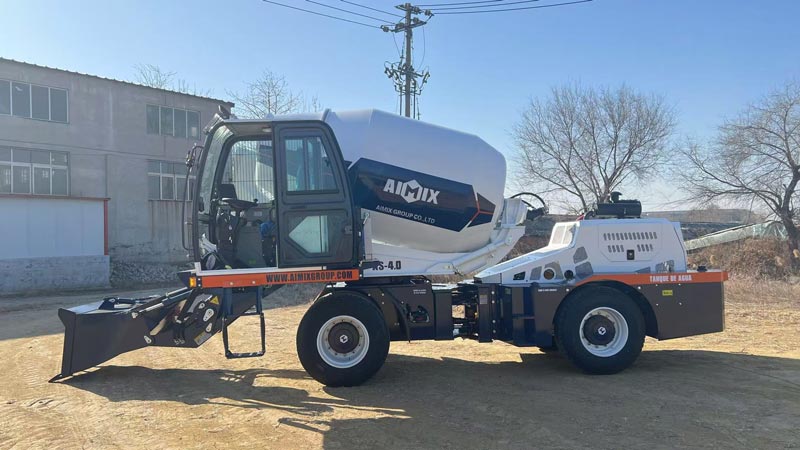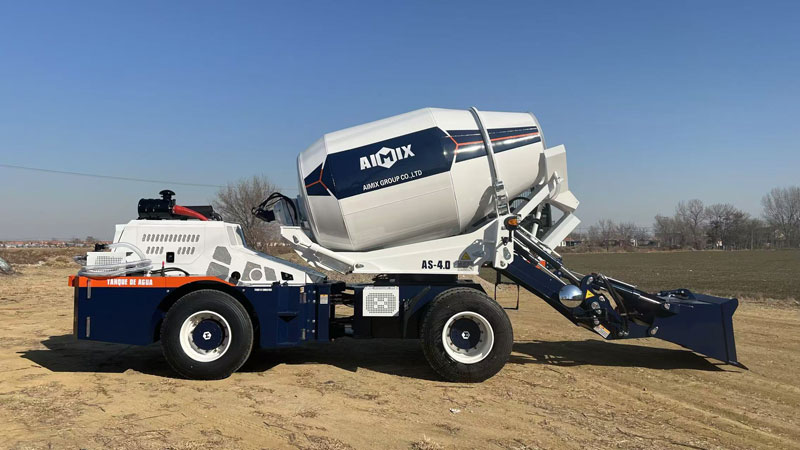Electro-hydraulic hybrid control systems are transforming mobile concrete equipment by combining precise electronic control with hydraulic power. When applied to the self-loading concrete mixer, these systems optimize every stage of production—from loading aggregates to mixing and transporting concrete—reducing cycle time, improving dosing accuracy, lowering operator fatigue, and extending machine life. Contractors using hybrid-controlled self-loading concrete mixer(autohormiguera) consistently report faster, more consistent pours, which is especially valuable for tight schedules and high-demand projects.
Understanding electro-hydraulic hybrid control
Definition and core components
Electro-hydraulic hybrid control integrates electronic controllers such as PLCs, HMIs, and sensors with hydraulic actuators, pumps, and proportional valves. Sensors continuously measure aggregate weight, water volume, and drum speed. Electronics make decisions based on these inputs, while hydraulics execute precise movements like bucket tilting, drum rotation, and steering adjustments. This combination ensures fast, repeatable, and smooth operation while reducing mechanical wear.
Precision that reduces rework
Hybrid control allows real-time corrections during batching. For example, if water flow or aggregate weight deviates from preset parameters, the system automatically adjusts, ensuring consistent mix quality. Reduced variability translates into fewer rejected loads, less rework at the pour, and lower material waste. This level of precision is critical for projects where concrete strength, slump, and durability must meet strict standards.

Advantages of hybrid control for self-loading concrete mixers
Faster, repeatable cycles
Proportional hydraulics and intelligent sequencing enable quicker drum reversals, smoother bucket tilts, and more precise loading. Electronic control minimizes idle time between operations, allowing operators to complete more cycles per day. On a large construction site, these small time savings accumulate into significant efficiency gains, sometimes exceeding 15% in total output.
Energy-efficient operation
Hybrid systems only use hydraulic power when needed, unlike traditional systems that run pumps at full capacity continuously. This reduces fuel consumption and heat buildup, which prolongs hydraulic component life and prevents downtime due to overheating. For long projects or remote sites, this energy efficiency can lower operating costs significantly.
Reduced operator dependency
Even less experienced operators can achieve consistent performance. Features such as preprogrammed batching recipes, auto-throttle, and soft-start mixing ensure the machine operates optimally. This reduces mistakes, enhances quality control, and allows management to allocate labor more flexibly across multiple sites.
Regional applications and considerations
self-loading concrete mixer Chile
Chile’s diverse geography ranges from coastal ports and urban construction to mining operations in the highlands. A self-loading concrete mixer Chile equipped with hybrid control handles dusty environments efficiently and reduces fuel consumption in remote areas. Additional features like corrosion-resistant coatings, upgraded cooling systems, and sealed electronics make machines reliable even under harsh conditions. Operators report faster cycles and reduced maintenance frequency on both coastal and highland projects.
self-loading concrete mixer Peru
Peru has three distinct construction climates: coastal, high Andean, and Amazonian jungle. A self-loading concrete mixer Peru(concretera autocargable Perú) with hybrid control adapts to these conditions. For instance, hydraulic assistance compensates for engine derating at high altitudes, while sealed electronics and robust filtration systems protect sensors from dust and humidity. This ensures stable, repeatable cycles across different terrains, which is especially important for infrastructure projects spanning long distances or remote locations.

Specification checklist for hybrid self-loading mixers
Control, sensing, and HMI
Choose machines with accurate load cells, water flow meters, and user-friendly HMIs that store multiple recipes. Real-time diagnostics and error logging speed up troubleshooting, reducing downtime and maintaining continuous production.
Hydraulic architecture and thermal management
Machines should include proportional valves, variable-displacement pumps, and thermostatic or oil-cooler systems. These components maintain consistent performance under continuous operation, even during high-demand pouring cycles.
Protection and serviceability
Electronics must be IP-rated and placed away from high-heat zones. Wiring harnesses and hydraulic connections should be accessible and protected. Reliable local dealer support for sensors, controllers, and hydraulic components is essential, especially in remote Chilean or Peruvian sites where downtime is costly.
Practical tips to maximize benefits
1) Pilot testing
Deploy the hybrid-equipped mixer(mixer autocargable Chile) on a representative segment of your project to measure actual cycle time improvements, fuel savings, and mix consistency compared to conventional equipment. Use this data to refine operation practices before full-scale deployment.
2) Operator and technician training
Training operators on recipe management, fault diagnosis, and HMI operation ensures the system is used to its full potential. Technicians should learn calibration and routine maintenance to avoid mid-project failures.
3) Scheduled preventive maintenance
Regular checks of both hydraulic and electronic components are crucial. Schedule filter replacements, oil inspections, and sensor calibrations to maintain machine performance and extend lifespan.
4) Optimize site layout
Plan aggregate piles, water access, and turning radii for the mixer to minimize idle movement. Even small improvements in site logistics lead to measurable time savings and higher daily output.
Conclusion
Electro-hydraulic hybrid control significantly enhances the performance of self-loading concrete mixers by combining precise electronic regulation with reliable hydraulic power. The technology reduces cycle times, improves mix consistency, lowers fuel consumption, and minimizes operator errors. For construction sites in Chile and Peru, selecting machines with appropriate protection, service support, and adaptability ensures that hybrid-controlled self-loading mixers deliver real, measurable efficiency gains. With proper selection, training, and preventive maintenance, these machines are powerful tools for accelerating concrete construction while maintaining high quality and reliability. Read more in this link: https://aimixgrupo.com/